Comparing elderberry shrubs to viburnum shrubs in the previous post would have made a lot more sense if a photo of Viburnum leaves were included for proper identification.
The compound leaves of elderberry have 5-9 serrated leaflets.
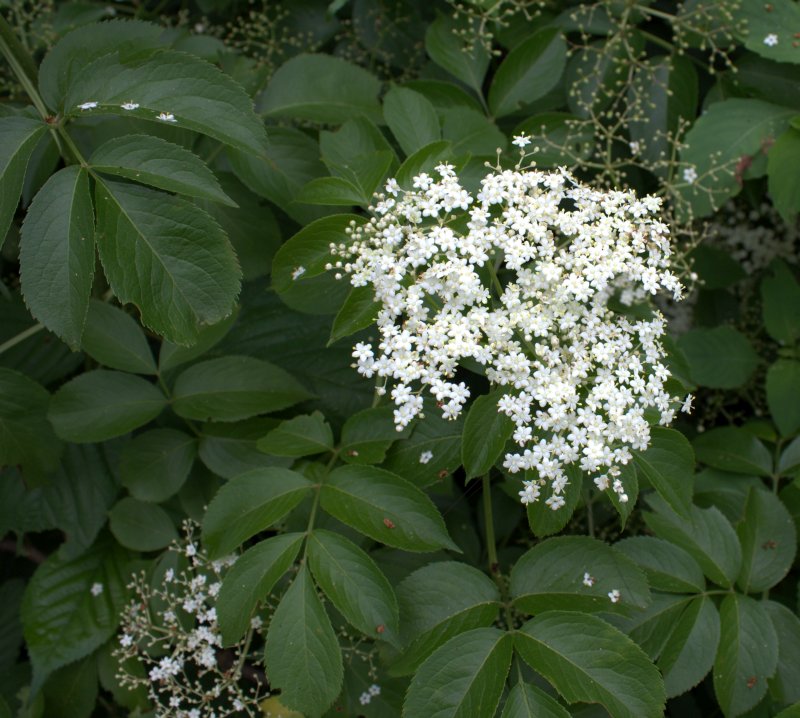
I found a Viburnum species blooming at Boyd Big Tree Preserve near Halifax, PA. We can tell that this little shrub is a type of Arrowwood by the shape of the toothed leaves.
The simple leaves of Viburnum spp. are opposite and entire, toothed or lobed.
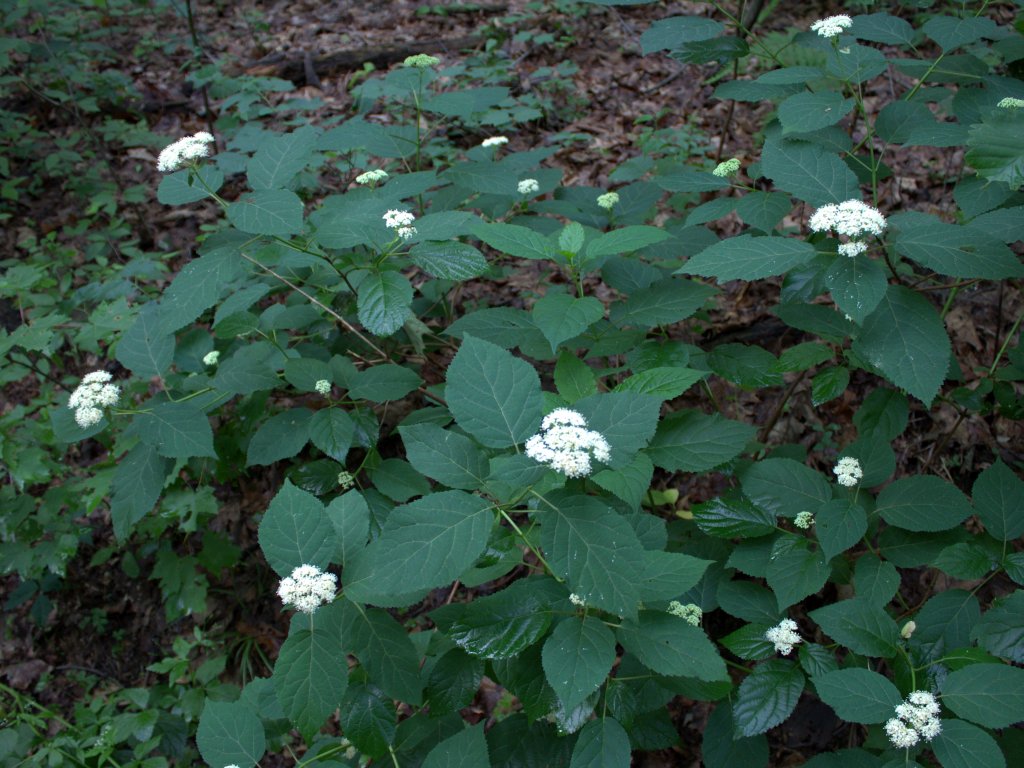
If the foliage were more closely inspected perhaps we would know if this is Northern or Southern Arrowwood. The one feature that distinguishes the two is that twigs are hairless in Northern Arrowwood, Viburnum recognitum, and velvety-hairy in Southern Arrowwood, Viburnum dentatum.
Details for identifying shrubs, like their leaf shapes, degree of leaf hairiness, or the absence of hairs on small twigs, can be found in Peterson’s Field Guide to Trees and Shrubs.
Close-up views of the twigs suggest that the specimen photographed above was an example of Southern Arrowwood.
So remember, if you’re seeking elderberries the compound leaves will verify that you’ve got an elderberry shrub, while simple leaves will tell you it’s a viburnum.
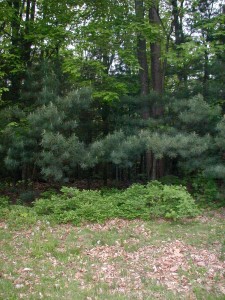
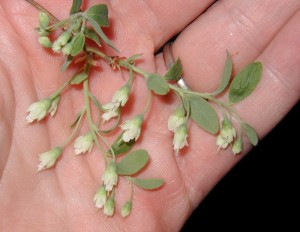
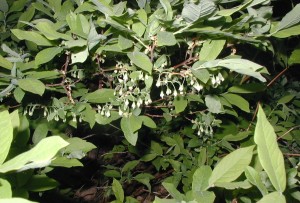
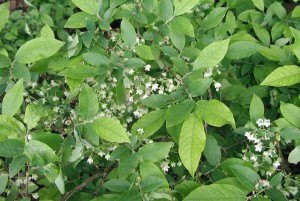
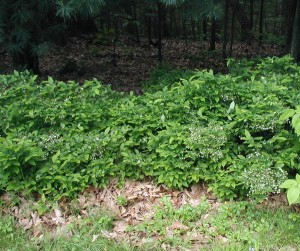
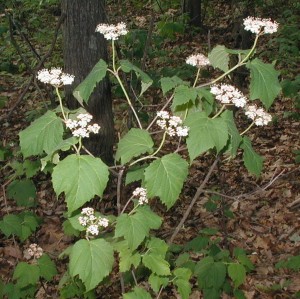
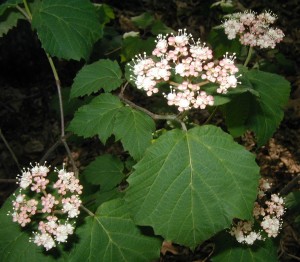
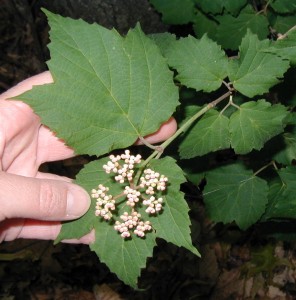
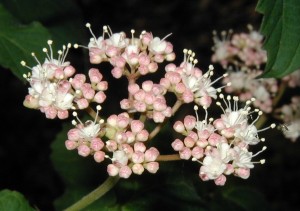

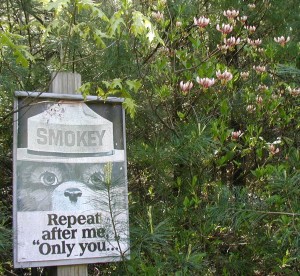
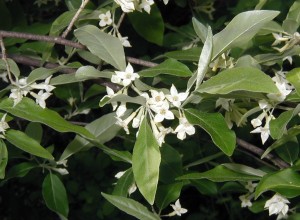
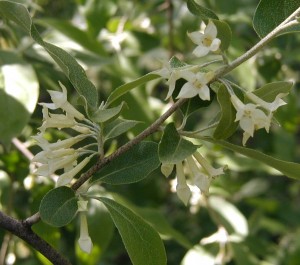
![Reblog this post [with Zemanta]](http://img.zemanta.com/reblog_e.png?x-id=577f6852-5d51-4e6e-b2e9-d6340970ea23)
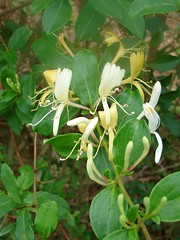
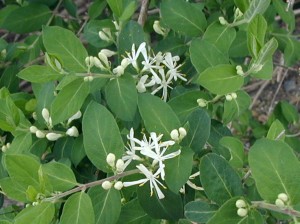
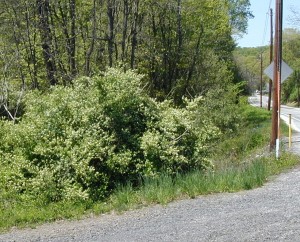
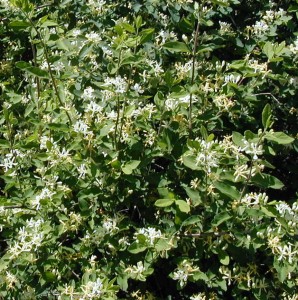
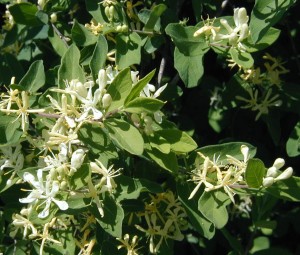
![Reblog this post [with Zemanta]](http://img.zemanta.com/reblog_e.png?x-id=c78e9304-f3cf-4463-bf34-3f546209fa3c)